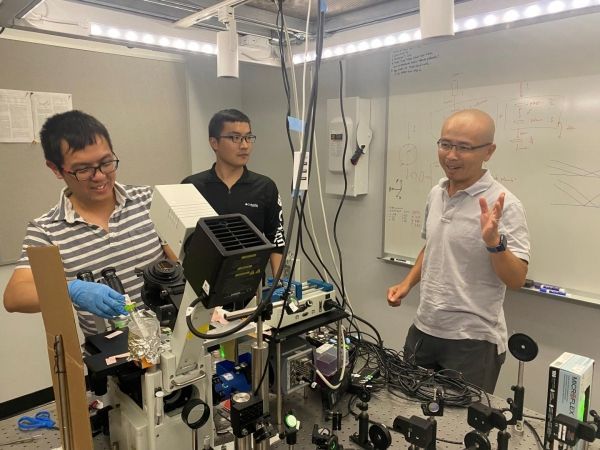Army-funded research identified a new chemistry approach that could remove micropollutants from the environment.
Micropollutants are biological or chemical contaminants that make their way into ground and surface waters in trace quantities.
Using a pioneering imaging technique, Cornell University researchers obtained a high-resolution snapshot of how ligands, molecules that bind to other molecules or metals, interact with the surface of nanoparticles. In doing so, they made an unexpected breakthrough discovery. They determined that by varying the concentration of an individual ligand they could control the shape of the particle it attached too.
This approach could result in an array of daily applications, including developing chemical sensors that are sensitive at a very low level to a specific chemical in the environment.
Read more at U.S. Army Research Laboratory
Image: Dr. Rong Ye (left), Dr. Ming Zhao (center), and Dr. Peng Cheng (right) at Cornell discuss their Army-funded research that identifies a new chemistry approach that could remove micropollutants from the environment. (Credit: Cornell University)


